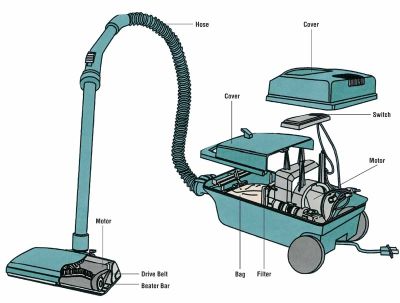If you were to assign your students to take apart a vacuum cleaner and look at it, and they do so, they may learn a little bit about how vacuum cleaners work – although they haven’t necessarily demonstrated so by this disassembly.
You could ask them to put it back together, and if they’re able to do so and it still vacuums, they have perhaps learned slightly more – and have at least demonstrated the ability to echo the existing construction of the machine in a mildly useful way.
But if they are able to take apart a vacuum cleaner, analyze it, pull a few parts from other items around the house, and use those parts to construct a functioning hovercraft – one which they then ride down the street with their Back To The Future goggles on – well, they have learned and demonstrated a rather impressive comprehension of the physical properties and functioning parts of vacuums and a few other things as well. They have, as we love to say in educational parlance, “demonstrated mastery.”
 Besides, just between you and me… [*furtive glancing about*]… sometimes we like to do artsy fartsy stuff and hang it on the wall for parents and principals to see. The most unlikely students sometimes flourish with this stuff, and as much as we all love a good 2000-word-typed-and-double-spaced-with-separate-citations-pages essay, we suspect there’s a pedagogical time and place for something less formal and more aimed at creative content-crunching.
Besides, just between you and me… [*furtive glancing about*]… sometimes we like to do artsy fartsy stuff and hang it on the wall for parents and principals to see. The most unlikely students sometimes flourish with this stuff, and as much as we all love a good 2000-word-typed-and-double-spaced-with-separate-citations-pages essay, we suspect there’s a pedagogical time and place for something less formal and more aimed at creative content-crunching.
ABC Summaries, Know-It-Ry, RAFTing Through History – even Quick-Writes (although those aren’t particularly artsy OR fartsy) – can all serve to help students rework content in creative ways, which in turn should help them to better understand and retain it.
Or at least that’s the goal. Here’s hoping!

